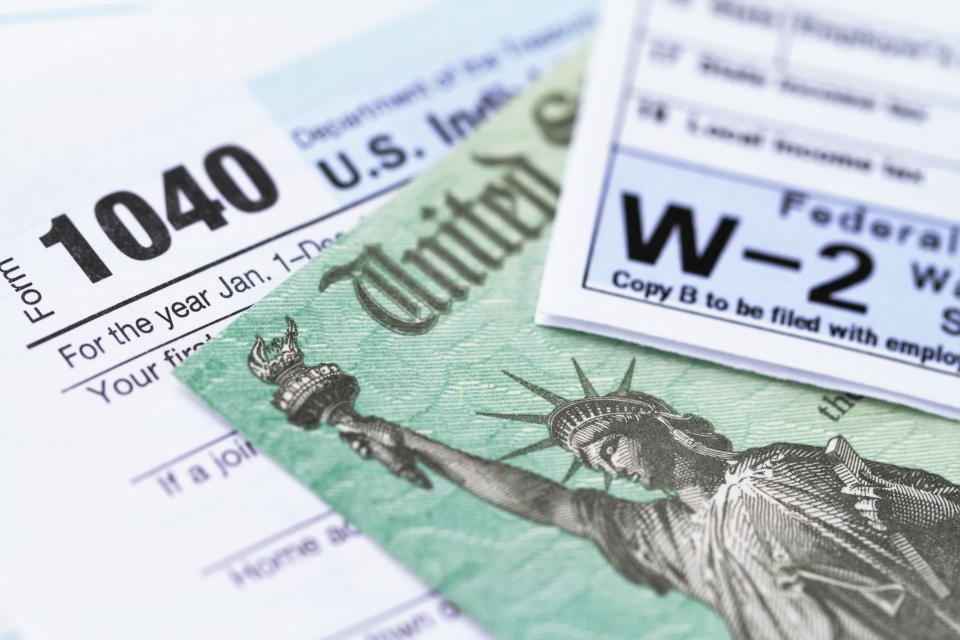Tax brackets: What they are and how they determine your tax bill
So how much do you pay the federal government in taxes? It depends on the tax bracket you fit into.
Your bracket is determined by both your taxable income — ordinary income such as wages, investment interest, and retirement distributions minus adjustments and deductions — and whether you file as a single taxpayer, married filing jointly, married filing separately, or head of household.
Each filing status has seven tax brackets with rates (detailed below) that get progressively higher as your income increases. Because of the new tax law that went into effect in 2018, the highest tax bracket was reduced and many taxpayers found themselves subject to lower rates.
“Right now, tax rates are at historic lows in the nation’s history,” said Logan Allec, a certified public accountant, who noted that rates at times have exceeded 90% in the past. “There have become fewer tax brackets and rates have generally become lower — especially at the higher-end of the spectrum.”
listen on Apple Podcasts | Spotify
Tax brackets by filing status
Here’s how the tax brackets look for 2019. Each year, the income limits for the tax brackets are adjusted for inflation.
Single taxpayers:
10% on taxable income over $0
12% on taxable income over $9,700
22% on taxable income over $39,475
24% on taxable income over $84,200
32% on taxable income over $160,725
35% on taxable income over $204,100
37% on taxable income over $510,300
Married filing jointly or qualifying widow:
10% on taxable income over $0
12% on taxable income over $19,400
22% on taxable income over $78,950
24% on taxable income over $168,400
32% on taxable income over $321,450
35% on taxable income over $408,200
37% on taxable income over $612,350

Head of household:
10% on taxable income over $0
12% on taxable income over $13,850
22% on taxable income over $52,850
24% on taxable income over $84,200
32% on taxable income over $160,700
35% on taxable income over $204,100
37% on taxable income over $510,300
Married filing separately:
10% on taxable income over $0
12% on taxable income over $9,700
22% on taxable income over $39,475
24% on taxable income over $84,200
32% on taxable income over $160,725
35% on taxable income over $204,100
37% on taxable income over $306,175
Progressive, marginal, and effective tax rates
It’s important to understand that the tax rate you pay isn’t flat. Instead, it’s progressive, so that taxpayers pay higher rates as their income increases.
“People get confused and think that as they move up into a higher tax bracket, all of their income will be taxed at a higher rate,” Nathan Rigney, lead tax research analyst at H&R Block. “No matter how much money you earn, everyone will pay 10% in tax up to a certain threshold.”

Here’s an example.
Let’s say you’re single and have $50,000 in taxable income. Your tax bracket is 22%, according to the brackets above, but that doesn’t mean you pay 22% on that entire $50,000.
The first $9,700 of your income is taxed at 10%. That’s the lowest tax rate for earnings between zero dollars and $9,700.
Your taxable income above $9,700 to $39,475 is taxed at the next highest rate at 12%. The remaining amount of your income above $39,475 — which is $10,525, in this example — is taxed at the 22% rate.
Add that together and you would pay $6,858.50 ($970 + $3,573 + $2,315.50) in taxable income for 2019.
So the marginal tax rate is 22%, the highest rate your taxable income is subject to. But you don’t pay 22% on all of your income. To figure out your “effective” or “average” tax rate, you divide the total taxed by the total income. In this case, the tax rate would be $6,858.50 divided by $50,000, or 13.7%.
Janna is an editor for Yahoo Money and Cashay. Follow her on Twitter @JannaHerron.
Read more:
Read more personal finance information, news, and tips on Cashay
